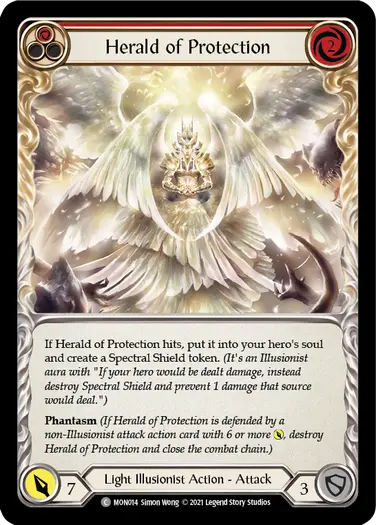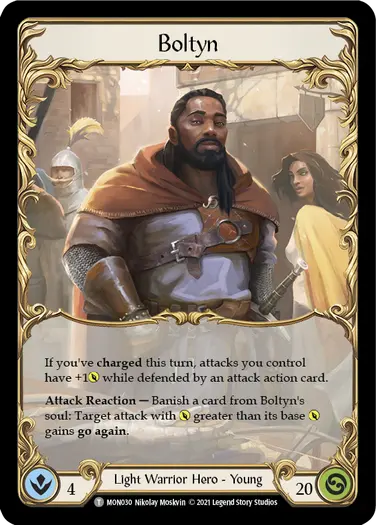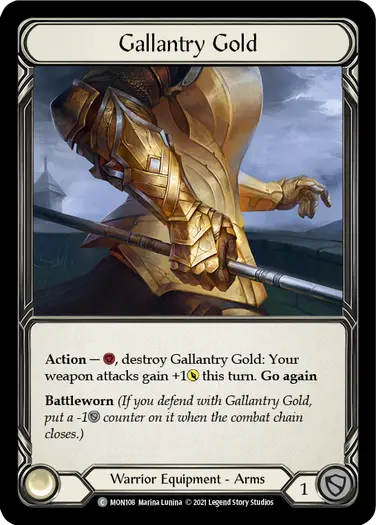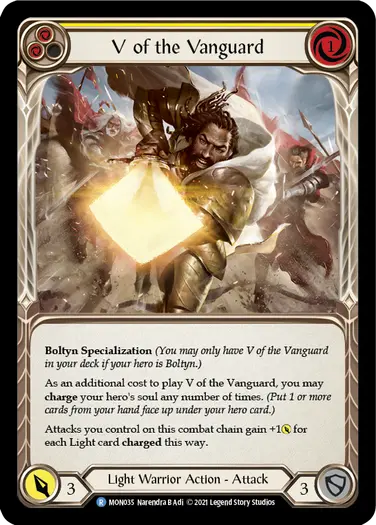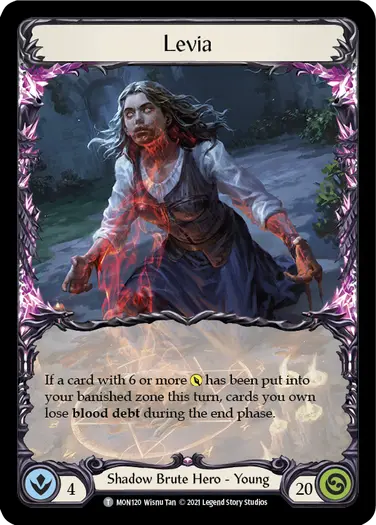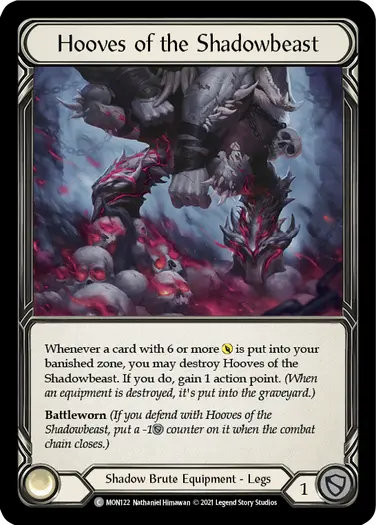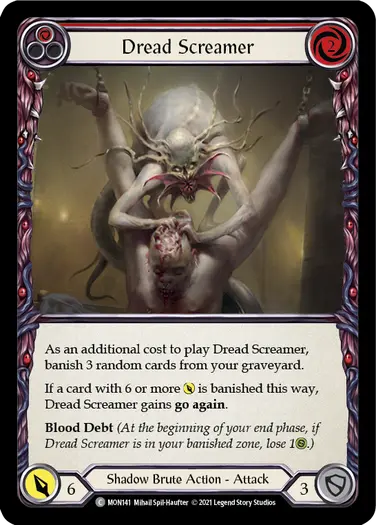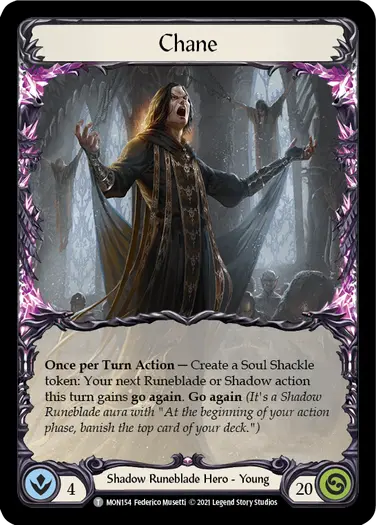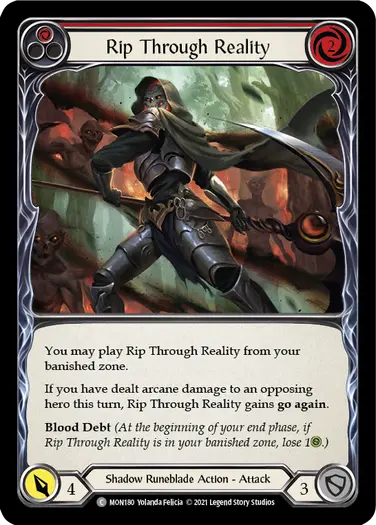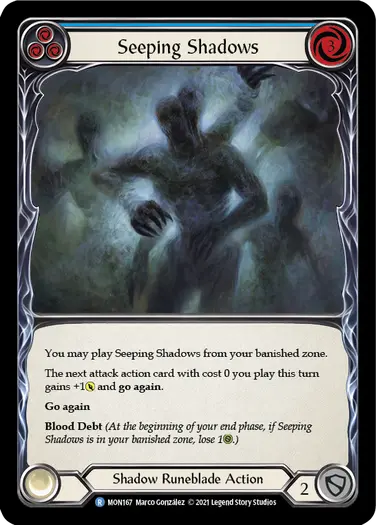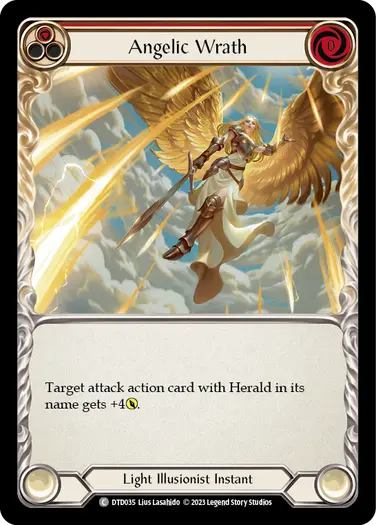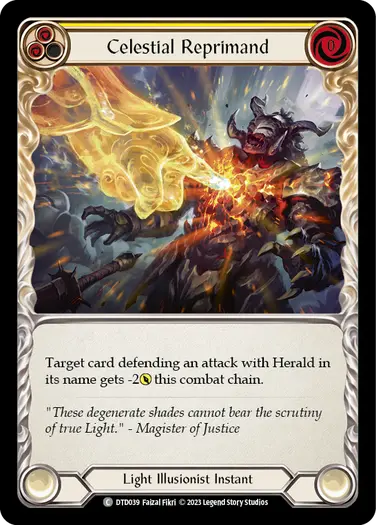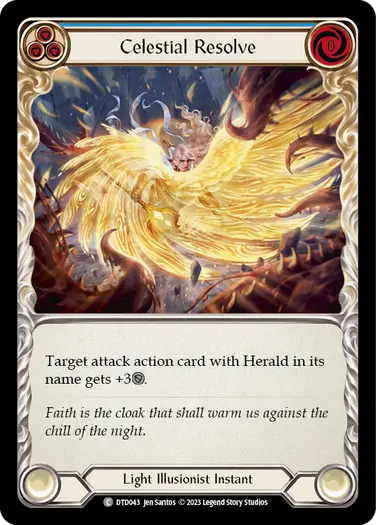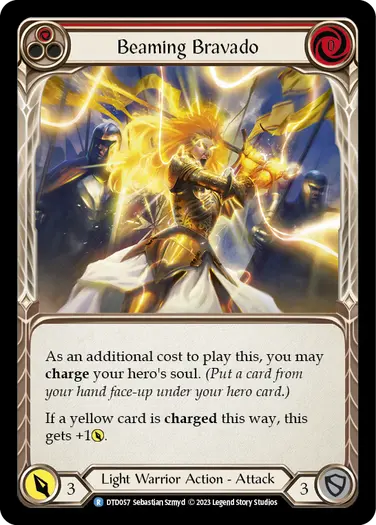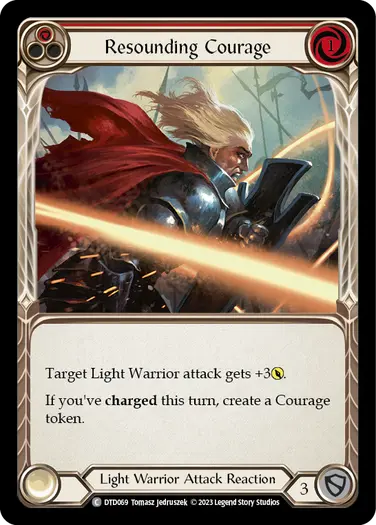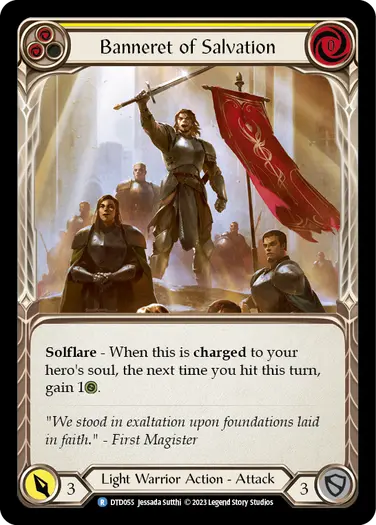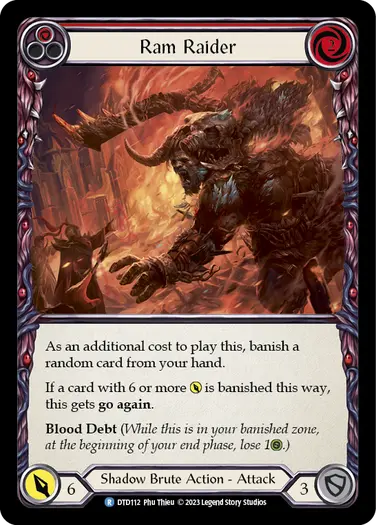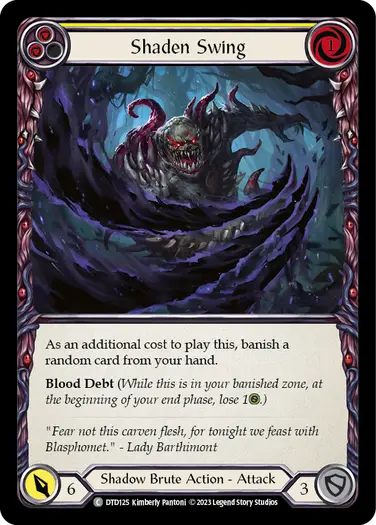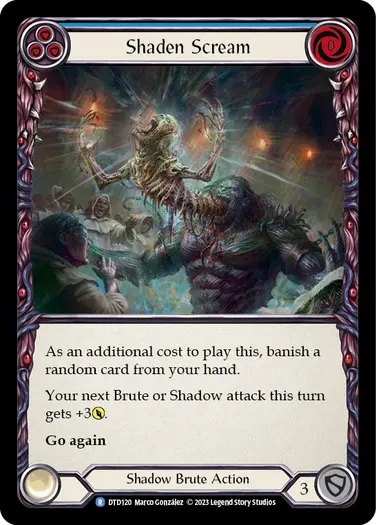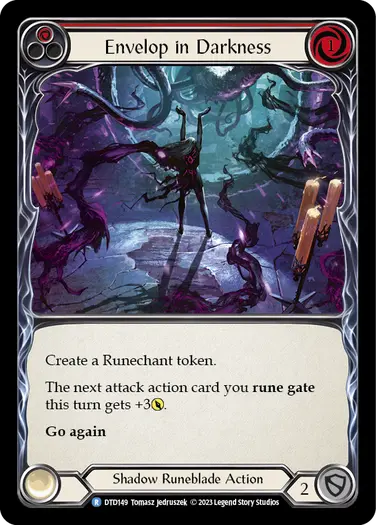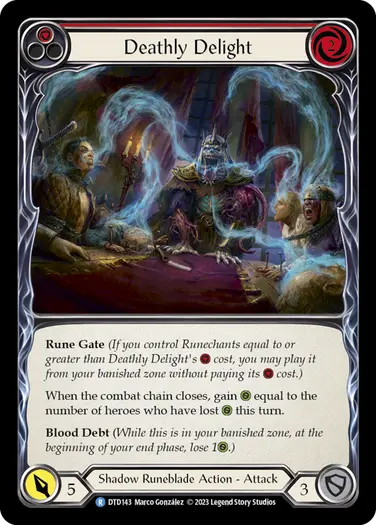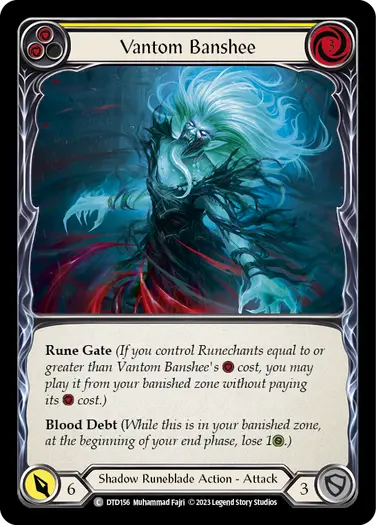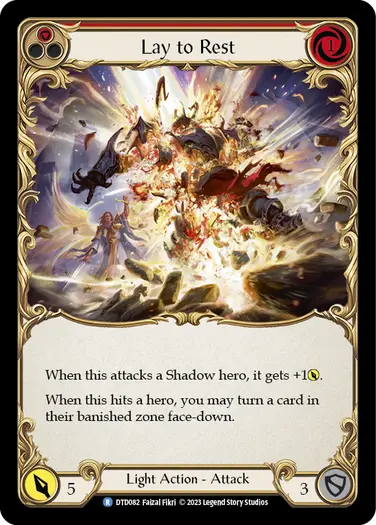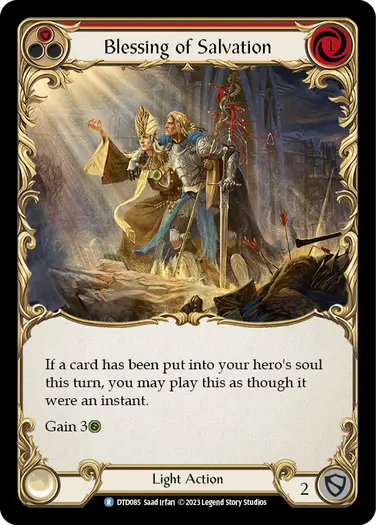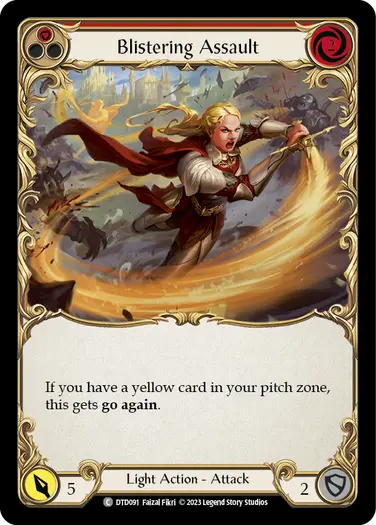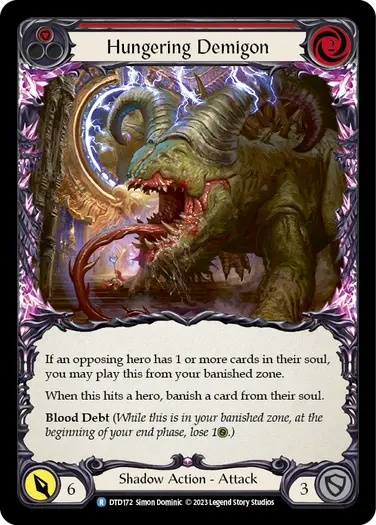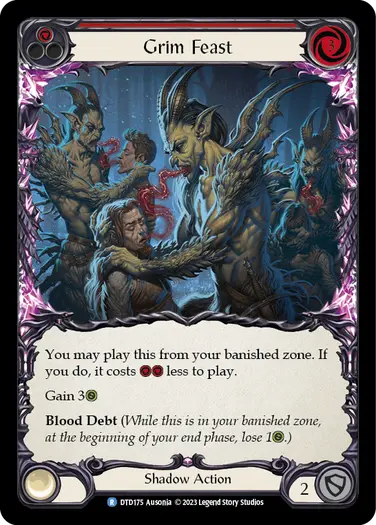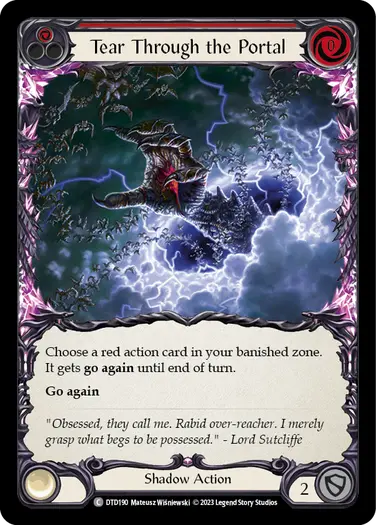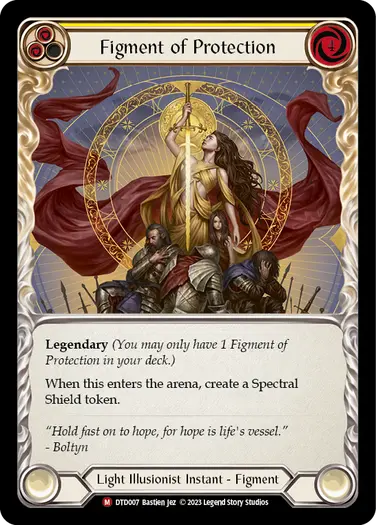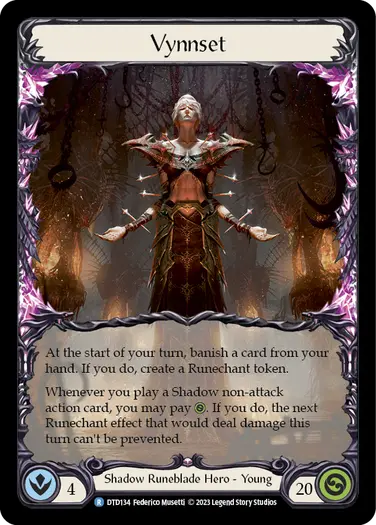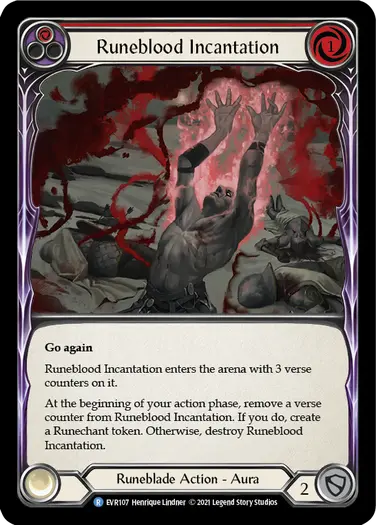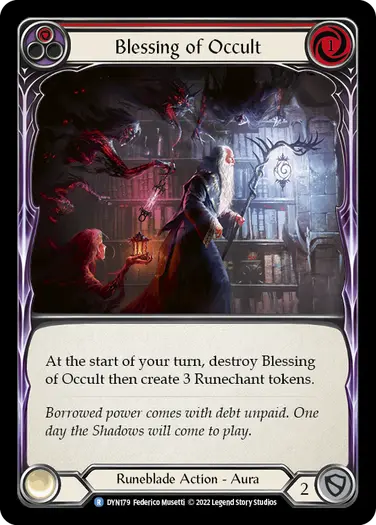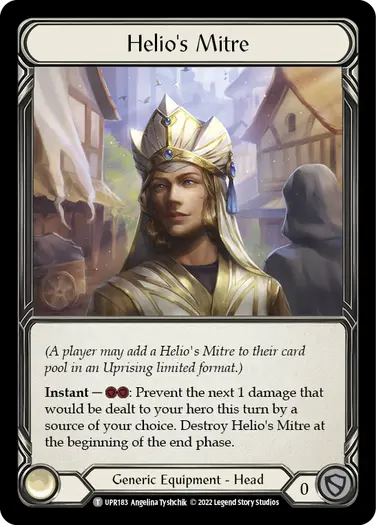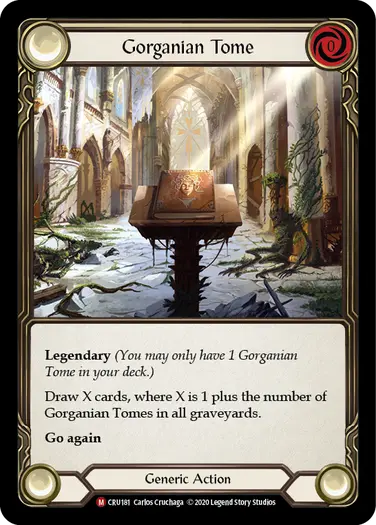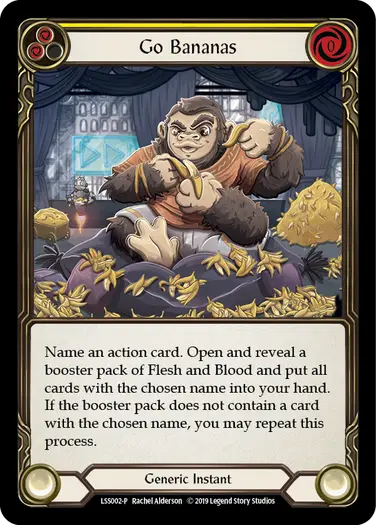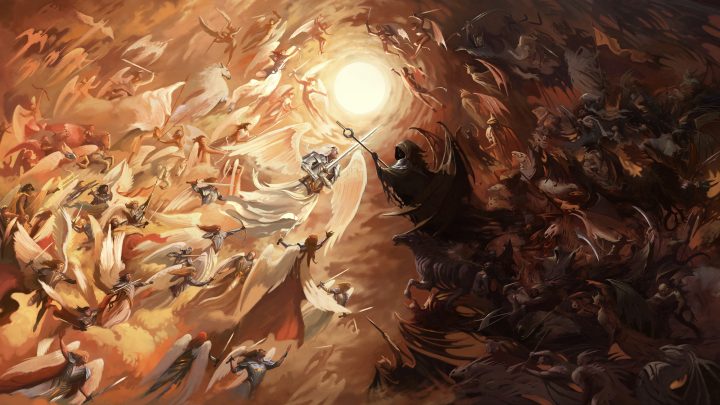Daniel Rutkowski is a pro player often seen in Top 8 brackets at major tournaments, from Battle Hardened to even the 2022 World Championship. An expert drafter and Fai enthusiast, Daniel loves pushing the boundaries of card design with what is known as building 'cubes'.
The 2023 National Championship season has come to a close, and as a result, players around the world have Monarch bulk just waiting to be used. Players from all walks of life have had their fill playing this iconic draft set in local and national events. Dusk till Dawn lets us support these talent cards to design and develop a unique Flesh and Blood experience. Cubing is a fun and interesting way to twist the basics, providing a creative outlet for you to play as game designer, set curator, or just show off all the cool cards you own. Let’s take a look at what designing a cube entails and some of the nuances with combining Monarch and Dusk till Dawn cards to create your very own cube.
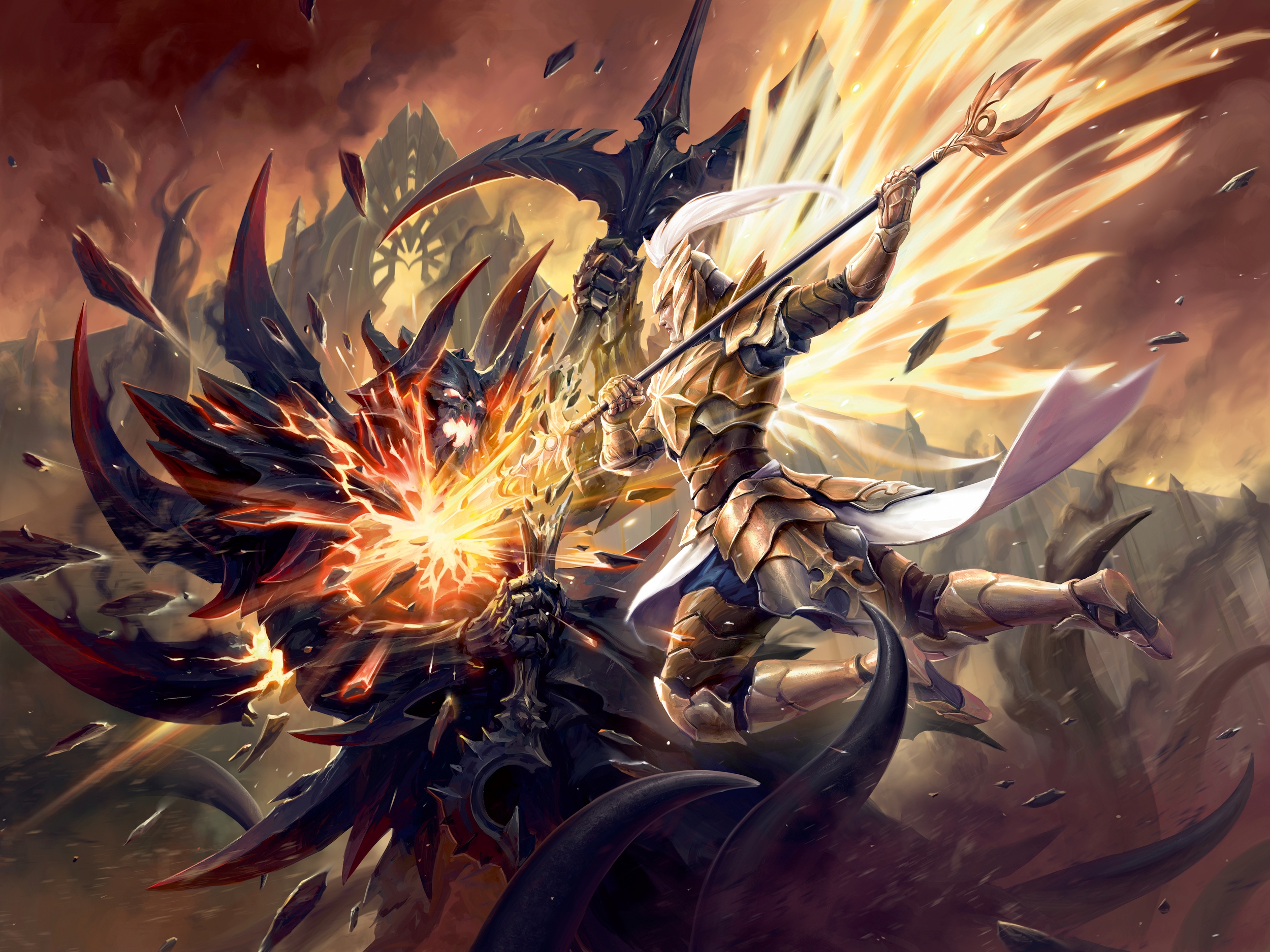
What's a Cube?
A cube is simply a curated collection of cards used to play a limited format, such as draft or sealed. This collection of cards is used to simulate booster packs for a custom format you design yourself. Official Flesh and Blood draft sets have specific formulas for their packs regarding number of class cards, generics, rares, equipment, and foils. As cube designer, you get to choose your own formula or if one even exists. You also get to design what the drafting process will look like. Another key difference with cube draft is that the drafters know the quantity and availability of the cards in the cube ahead of time. This means they can adjust their pick priorities based on cards they have or have not seen yet. Cubes typically offer a play experience with constructed level power, but fundamentals-focused gameplay.
Cube also provides a creative outlet where you, as the cube curator, get to leverage existing cards to create your own limited 'set' and can even design your own additional rules. I recommend using play experience and fun as your main driver and measure of success for your cube, but it is truly up to you what the experience will be like. I love using cubes as a way to show off some of my favorite cards I own, like artist signed cards or stamped cards from various Pro Tours.
Monarch from a Limited Perspective
Monarch is composed of two Light heroes and two Shadow heroes. Noting this overlap is extremely important because it illustrates which heroes will be competing for the same card pools. Having overlapping card pools typically allows for more flexibility, or staying open, in the drafting process as you can draft cards that work in multiple decks instead of just one. A lot of the generic cards in Monarch also tend to excel in one pair of heroes more than the other pair, creating additional overlap. It is up to you whether or not you would like to include generic cards in your cube. I plan to start with no generics and instead use a higher density of Light and Shadow cards.
The power level of the format is sneakily high because many of the decks have huge combo potential. Class and talent equipment in the set are extremely impactful and enable these combos. It is once again up to you, as cube designer, to decide what equipment is included and how they are drafted. For my cube, I chose to treat all class and talent equipment as tokens, as I expected them to usually be picked immediately.
Prism has access to very efficient two card hands and often looks to block with the other two cards. The goal of the deck is often to get a card into your soul, create a Spectral Shield as your weapon, and protect it at all costs.
Boltyn often fights to get cards into soul early game while chipping away at his opponent’s life total. Once he has two cards in soul and enough chip damage, he is able to play defensive until he sees a game-winning combo.
Levia creates an interesting dynamic balancing 'popping off' and turning on blood debt. Once blood debt is live, opponents often look to play defensive and wait for her to fail to trigger her hero ability. However, when Levia does go off, it can be extremely difficult to deal with. Pairing a go again attack with Hooves of the Shadow Beast can often end the game on the spot.
Chane follows the trend of incentivizing his opponents to block, as his power comes from banishing cards from his own deck. To mitigate this, Chane drafters aim to pack their decks with heaps of arcane damage and play towards big combo lines with cards like Rip Through Reality and Seeping Shadows. Chane’s banished zone acts as an extension of his hand. This allows him to block with cards when needed, using remaining cards to pitch to play from banish.
Dusk till Dawn from a Limited Perspective
While many have cracked packs and examined the cards in Dusk till Dawn, most of the common cards have not made their way into competitive Flesh and Blood lists just yet. A Light and Shadow cube is the perfect way to get to know these new cards better and discover some of their hidden synergies and best uses. The set introduces a lot of new and interesting cards for the four heroes in Monarch.
Prism gains additional Herald support in the forms of cards like Angelic Wrath, Celestial Reprimand, and Celestial Resolve.
Boltyn now has a variety of new tools to experiment with. He gains new charge attacks, more attack reaction cards, additional ways to pump his first attack allowing him to activate his hero ability, and payoffs for charging cards in the form of bannerets.
Levia now has more reliable ways to turn off blood debt through banishing from hand, a higher density of 6-power options, and more actions with go again.
Chane does not gain much outside of poppers in the Shadow Runeblade slot, due to the lack of Runechant generation to support the rune gate mechanic, but we'll talk about this more in a little bit, with some possible solutions which could enable him to utilize them.
The Light and Shadow cards are where I believe this set truly shines from a limited perspective. They introduce the potential for new archetypes within the already established Monarch heroes by providing a variety of new utility options and powerful effects.
The new Light cards introduce banished zone manipulation, life gain, aura interaction, damage prevention, and powerful attacks.
The new Shadow cards add additional soul manipulation, life gain, and powerful action cards.
Prism, Advent of Thrones and Vynnset
Dusk till Dawn adds two new young Light and Shadow heroes in Prism, Advent of Thrones, and Vynnset. Both have very impactful hero abilities, but introduce some interesting cube building decisions. Let’s take a look at each of the new heroes individually.
Prism, Advent of Thrones allows you to search your deck for a figment whenever a Herald goes into her soul. Her second ability allows you to awaken figments you control, flipping them into angel allies. At the time of writing, this is the only way to awaken figments, meaning the original Prism is unlikely to want to draft or play these cards. Having additional cards in your cube that only one hero is interested in may not be something you want. Prism, Advent of Thrones would effectively have no hero ability should you remove figments entirely, so I would strongly recommend including them if you want to add her to your cube.
Vynnset has the ability to start each turn with a Runechant in play, if you're able to banish a card from your hand. If you have played with or against Dread Scythe in Monarch limited, you know that consistent arcane damage can be very challenging to deal with. Dusk till Dawn introduces the Radiant and Darkness common equipment sets, allowing all classes to prevent arcane damage, but you may want to introduce some additional ways to do so by adding Arcane Barrier or additional Spellvoid equipment. Determining how to handle this is entirely up to you and will likely require testing and playing of the cube to get it right. I plan to start without adding outside equipment. Vynnset should be able to utilize the existing Monarch card pool, but Dusk till Dawn introduces the extremely rewarding rune gate mechanic. Cards with rune gate may be played from banish if you control runechants equal to or greater than their cost, which is typically two or three. Between the two sets, there are only two non-equipment cards that create Runechants, so you may want to consider selecting Runechant generating cards from other sets to include. Including Runechant generation is a great way to make these rune gate cards more playable in Chane as well.
Building a Flesh and Blood Cube
Flesh and Blood has a truly unique and incredible game engine that we get to take full advantage of when designing our cubes. Having such a strong foundation allows us to have a lot of fun with the focus of our cubes and what cards we choose to include. One of the biggest benefits of this engine is the modularity of every card. Most cards can be used in at least three unique ways: playing, pitching, or defending. This means the cards we choose to include in our cubes are able to fill multiple roles, which provides flexibility and room for creativity when curating our card selections.
Equipment is another unique feature of Flesh and Blood that is extremely impactful to drafts and gameplay. This is due to the fact that they start the game in play, providing consistency to your gameplans. The equipment you choose to include will have a significant impact on the balance and power level of your cube. You may also choose to handle equipment differently than how the other cards are drafted. Some or all could be designated as tokens and available to all after the draft. You could introduce a separate draft or bidding round just for equipment. It is entirely up to you as cube designer and one of the most fun and rewarding parts of the process.
Now, let’s go through the steps to take when designing a Light and Shadow cube!
Decide your Cube Structure
Before you start adding cards to your cube, you will need to decide on the following:
- How many players your cube will support.
- Focus of your cube.
- Which format will be used to draft or distribute the cards.
- Pack structure, if simulating booster packs.
- Number of cards needed for your cube.
I strongly recommend starting this process by identifying your likely play group for this cube. Do your locals love drafting and do not mind playing an unofficial set, are you looking for a cube that is draftable by four or less players, or do you have a friend group you know would love to cube with you? Building around this question will ensure you get to have fun with your creation and give you the ability to test and improve it more often. My most consistent cube player base is my brother Mike, so I tend to build cubes that support two players, but can also be used as a four player draft option in case more friends show up.
The focus of your cube is where your creativity can really shine. You have a favorite class or talent you want the entire cube to be, a favorite hero you want every player to draft and play as, or maybe you just want to find a way to jam all of your coolest and shiniest cards together.
For a Light and Shadow cube, I would recommend building a 360+ card set able to support up to at least eight drafters. 360 cards would allow eight drafters to draft three 15-card packs. You can increase this number to support more drafters or introduce more variance to the drafting process. This cube could also support smaller pods of sealed players. The number of packs used will likely depend on the contents of your cube and is up to you. The pack structure used for sealed or draft also depends on the cards in your cube, but here is my plan to start:
1 Pack: 2x equipment, 7x class cards, 6x Light/Shadow/Generic cards
Going Shapeshifter
Once again, as cube designer, you are free to express your creativity and are not bound by the traditional rules of Flesh and Blood. While I would not recommend moving too far away from the core rules and engine, introducing new rules, tokens, drafting phases and more can make your cube truly unique and interesting. Perhaps you love shapeshifter sealed and just want to slam all of the most powerful cards in the game together. Maybe you want to introduce your own custom equipment tokens into the format similar to Helio's Mitre from Uprising. Cube gives you the space to take this incredible game, engine, and card pool and make it your own. When adding any of your own mechanics, the most important thing is to make sure it is clear how they work and are fun for all players. Do not be afraid to try things out, as you can always remove them later!
For a Light and Shadow cube, I plan to start without any custom rules or alterations to the drafting process, but I could see an alternative equipment only drafting process or assigning some equipment as tokens working out great. I will likely explore those two options as I test my cube further.
Choosing Which Cards to Include
A huge benefit of choosing the focus of your cube first is that you can build the core of your cube with all cards that fit your focus. I recommend adding any cards that meet said focus to start, and then adjust accordingly. Your focus should include what rarities of cards you plan to include as well. A high power cube likely has Majestics and Legendaries involved, but maybe you want to focus only on Commons and Rares.
Next, you will want to map out how many cards of each type you need to meet the pack structure you have decided on. Here's an example based on the pack structure I recommended earlier:
Players: 8
Packs per Player: 3
Total Packs: 24
Equipment per Pack: 2
Class cards per Pack: 7
Light/Shadow/Generic cards per Pack: 6
Total cards per Pack: 15
Total Equipment: 48
Total Class cards: 168
Total Light/Shadow/Generic cards: 144
Total cards needed: 360
Deciding the cards to include for these categories is quite nuanced, but I recommend breaking this into even distributions, though you very well may want to and have better results skewing these towards certain heroes or archetypes:
Total Class cards: 168
Total unique Class/Talent combinations: 4
Cards per unique Class/Talent combination: 42
Total Light/Shadow/Generic cards: 144
Total unique Talents: 2 (technically 3 if you choose to include Generics)
Cards per unique Talent: 77
I separated equipment because you likely want some number of equipment which are beneficial to multiple or even all heroes. This is also the only slot where I plan to include cards which are not Shadow or Light, until the equipment pool is deeper. The way you distribute these 48 card slots is entirely up to you, but here is the template I will start with:
Light equipment: 10
Shadow equipment: 10
Equipment per unique Class: 7
Total equipment: 48
Once all of these parameters are established, you can take your core cards that meet your focus and plug them in. Add or remove cards as needed to meet your parameters and the card list for the first iteration of your cube has been created. Time to hit the tables and see how your creation plays out!
Play, Iterate, and Have Fun
I believe this section to be the true core of any successful cube. Playing your cube improves your cube. Up until now, the cube has been physically curated, but the actual gameplay has been conceptual. Sitting down and playing your cube will very quickly identify changes you may want to make or spark new ideas. Cubes are meant to be fluid and constantly iterated on as you discover balance issues or new cards become available. Sourcing feedback from your cube participants after each session can greatly aid in this process. I use fun and eagerness to draft again as my key measures of cube success and look to target changing cards or mechanics that are detrimental toward these measures. Periodically removing cards, adding cards, or adjusting cube mechanics not only keeps the drafting and gameplay fresh, but also gives you a fun project you can keep coming back to and improve on.
It is a truly satisfying experience to build a cube that people are excited to play and I hope you all get to experience that and enjoy doing something fresh and new with all that Monarch chaff to tie you over until Bright Lights hits shelves!

